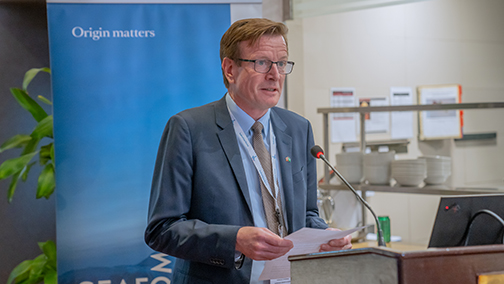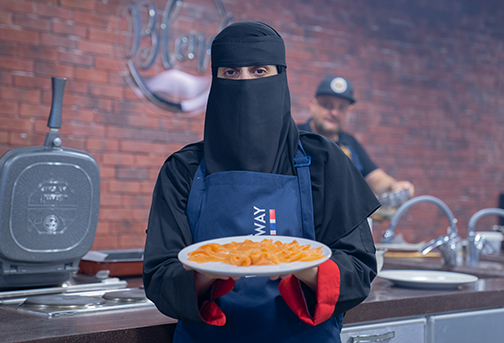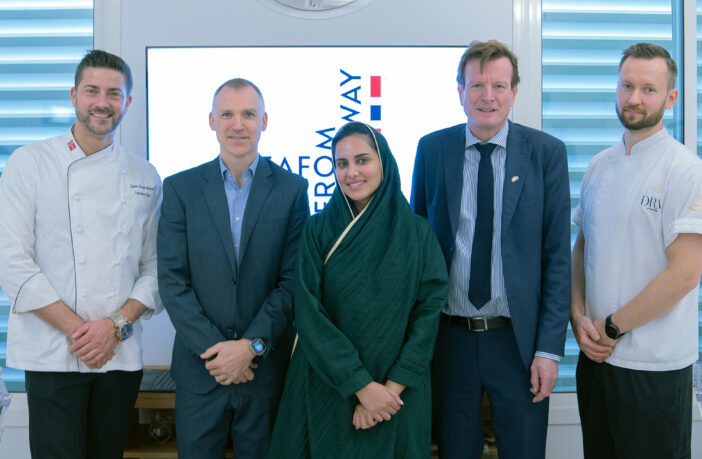As the part of Saudi Horeca at Marriott, the biggest international food, beverage, and hospitality exhibition in Saudi Arabia, the Norwegian Embassy in Riyadh, in collaboration with the Norwegian Seafood Council, organized “Blend Culinary” cooking workshop to introduce the best of the Norwegian seafood and explore the expectations of Saudi consumers. The opening remarks of the workshop were delivered by Ambassador Thomas Lid Ball. The Ambassador emphasized that the sea and seafood as integral parts of the two countries culture, heritage, and future.

He further recalled the start of the Norwegian Seafood Council’s journey in the Saudi market. “Six years ago, the seafood industry asked the Seafood Council to look at the growing seafood market in Saudi Arabia. Our two kingdoms have a similar history, and nowadays, we aim to ensure a green transition throughout our industries and sustainable management of our natural resources.”
The Norwegian Seafood Council works closely with the fisheries and aquaculture industry to improve markets through research, development, and risk management. This has resulted in high quality, evident in the characteristic taste of the species caught in Norway. The country is the world’s largest Atlantic salmon producer, accounting for approximately 70% of Norwegian seafood exports to more than 150 countries. Salmon is considered one of the exceptional seafood species in Norway, grown in the cold and clear waters, slowly acquiring a clean and fresh taste. It is highly nutritious and rich in vitamins, proteins, and Omega-3.

Discussing the quality of the seafood, the Business Development Manager of the Council, Mr. Jan Eirik Johnsen, mentioned, “The quality of Norwegian seafood is a result of fantastic natural conditions, a 1000-year history of harvesting and exporting our seafood, innovation, and peoples’ skills. In addition, we have strict governmental regulations and controls to ensure that the quality and safety of the seafood is held to the highest standards.”
When I asked about the current state of exports in the Saudi market, Mr. Johnsen said that seafood exports from Norway to Saudi Arabia had seen a very positive development in the last few years. The volume has more than doubled in the last five years, and this year will be a new record. “From what I have observed at the Saudi Horeca, there is great interest in Norwegian seafood, and the feedback is that there is an increasing demand, not least connected to the growing sushi trend in Saudi Arabia. Therefore, we regard the potential in Saudi Arabia as very good.”
A well-known Norwegian Chef, Daniel Rouge Madsen, led the workshop and cooked 1500 portions of seafood. He described Saudi cuisine as steaming from its culture and traditions, being meat-based, rich in spices and salads, and low in salt, yet sweet. When I asked what flavor of Saudi cuisine he would try with Norwegian salmon, Chef Daniel answered, “With salmon, I would use the different spice mixes such as zaatar or cumin/cayenne. It also goes well with hummus, mint, coriander, and rice.”

It is well known that one of the reasons people travel is to experience the food culture in other countries. Cooperation between Norwegian exporters and Saudi importers, producers, and the entire value chain all the way to the consumer make Saudis to feel in Norway, enjoying delicious seafood seasoned with warm Saudi spices.
The seafood industry in Norway delivers 42 million servings of seafood to people all over the world every day. Saudi Horeca has become a great meeting place and opportunity for producers and consumers who were privileged to taste not only Norwegian salmon, but also mackerel, cod, herring and king crab.




